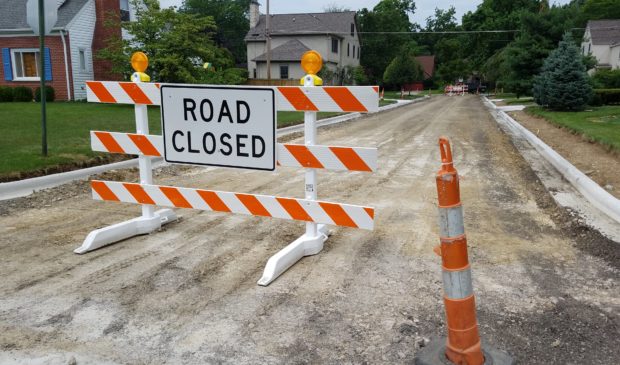Council likely to delay vote on street impact fees
Wednesday, August 7, 2019 by
Ryan Thornton City Council will likely allow two more weeks for dialogue before the Austin Transportation Department begins crafting details of its street impact fee program.
With Council expected to adopt street impact fees in January 2020, Council Member Ann Kitchen said during Tuesday’s work session that she doesn’t believe the delay will disrupt the proposed schedule. Transportation Director Rob Spillar said the postponement would not be an issue as long as the vote is not pushed back any further. He also requested that Council leave the public hearing open until Aug. 22 to make sure they comply with the state law’s intention that the hearing and vote are conducted in quick succession.
Completion of the street impact fee program is one of several key action items listed in the Austin Strategic Mobility Plan as near-term goals and part of the document’s overall objective to partner with private development to achieve transportation outcomes. While developers sometimes contribute to transportation infrastructure without such a program, the document describes impact fees as a more equitable and predictable way to pay for capital improvements like vehicle lanes, bridges, sidewalks or bike lanes.
Spillar said that while state law requires those improvements be related to roadway capacity, that could potentially include components of the city’s multimodal transportation vision as Project Connect evolves and the city’s transportation criteria manual is updated to reflect goals outlined in the ASMP.
“For some of those roads we will designate that the pavement, for instance, needs to be concrete so that it can better handle the heavier vehicles that are represented by transit. Because that is the specified design in the transportation criteria manual, then these fees could help to pay for the cost of that roadway, just like, for instance, sidewalks are part of the roadway definition,” Spillar explained.
Council Member Alison Alter took the opportunity Tuesday to revive a question she had previously posed to transportation staff in June regarding how various assumptions about the new Land Development Code may impact the growth predictions that will ultimately form the basis of the impact fee.
As she stated at the Mobility Committee’s June meeting, Liane Miller, a senior business process consultant with the Transportation Department, said the Land Development Code is important for many reasons but did not form a basis for the department’s growth assumptions. The primary tools used for the predictions, she said, were data about population and demographics as well as the capacity of specific land parcels based on what is predicted in the Imagine Austin Comprehensive Plan and general growth trends.
“We didn’t look at the CodeNEXT or the Land Development Code zoning specifically in developing these land use assumptions, so while the code has some impacts, I would say our land use assumptions are independent of those,” she said.
Cole Kitten, division manager with Transportation, said growth trends forecast need and capacity for an additional 125,000 housing units over the next decade. “Clearly the Land Development Code assumptions can either constrain or support whether or not we can deliver 125,000 units,” he said. “However, in regard to the impact fee land use assumptions, 125,000 units over 10 years is a reasonable amount of growth.”
Kitten further explained that the impact fee per unit would fluctuate with the adopted growth predictions. “If you think that 125,000 is too much and that we need to make it fewer, then the fee would be increased over the number of units,” he said.
If the assumptions are eventually understood to be out of sync with growth patterns, state law allows for routine growth projection updates and requires they be done at least every five years.
Alter also requested a memo outlining the progress and impact on the city’s finances and infrastructure since impact fees were adopted by Austin Water. Prior to making a decision about the street impact fees, she said, “It would be really helpful to understand how much having those impact fees for water and wastewater has done to shore up the finances of Austin Water and increased its bond rating and allowed it to defease debt and other kinds of things.”
Council is scheduled to hold a public hearing and consider a resolution to adopt the program’s working land use assumptions on Thursday. With no objections to Kitchen’s request, however, the process will be divided into two parts, beginning with Thursday’s public hearing and ending with a vote at the following meeting on Aug. 22.
“I just think it’s a very complex issue and one I’m very excited about, I might add, but I wanted to make sure that the entire Council as well as the Mobility Committee has time to ask all of the questions,” Kitchen said.
This story has been corrected. Photo by Dan Keck is in the public domain.
The Austin Monitor’s work is made possible by donations from the community. Though our reporting covers donors from time to time, we are careful to keep business and editorial efforts separate while maintaining transparency. A complete list of donors is available here, and our code of ethics is explained here.
You're a community leader
And we’re honored you look to us for serious, in-depth news. You know a strong community needs local and dedicated watchdog reporting. We’re here for you and that won’t change. Now will you take the powerful next step and support our nonprofit news organization?











